ASUS ROG X570 Crosshair VIII Hero
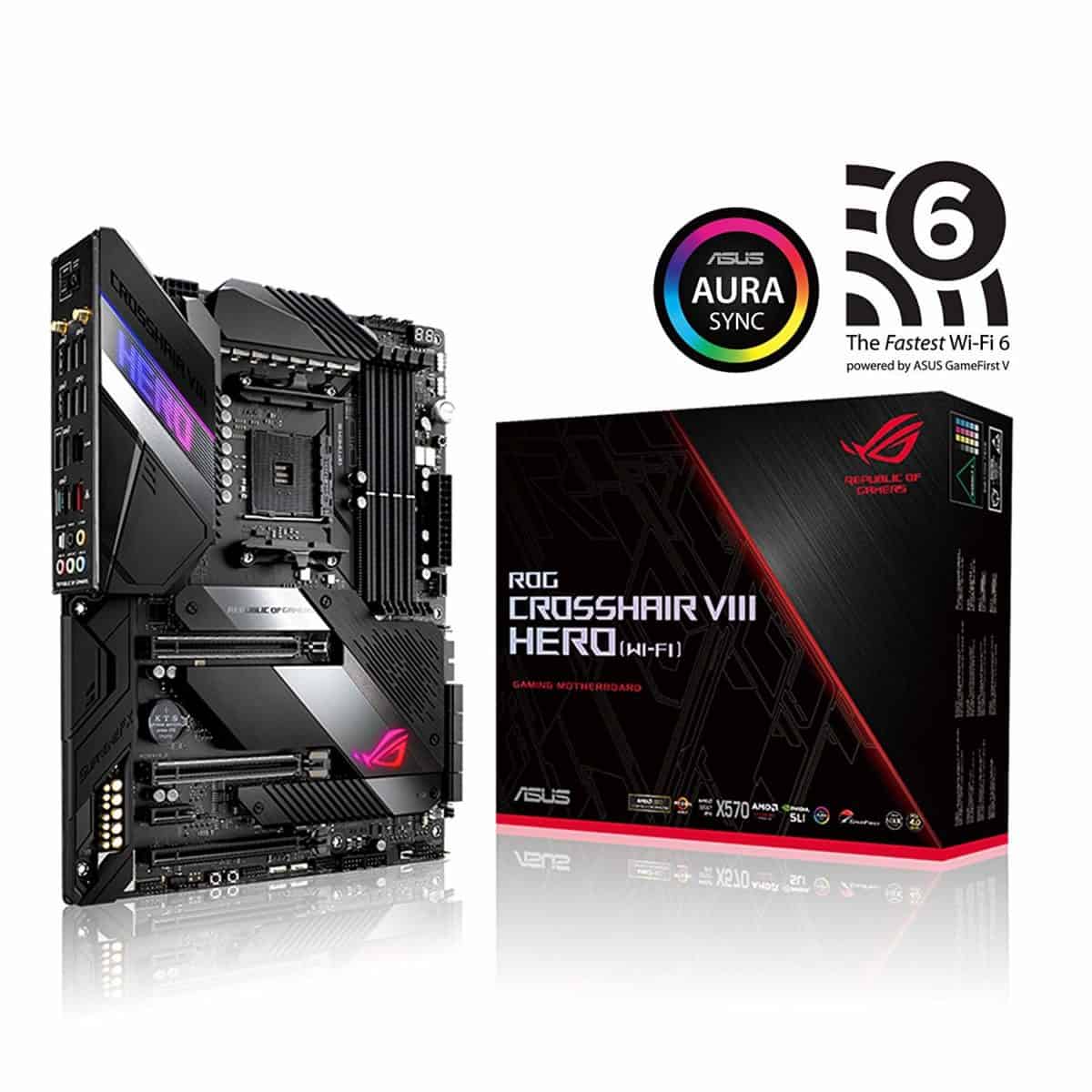
5-way optimization
High performance networking
Solid overclocking potential
Can get quite hot
Shop on Amazon
CHECK PRICEWhich motherboard should you choose?
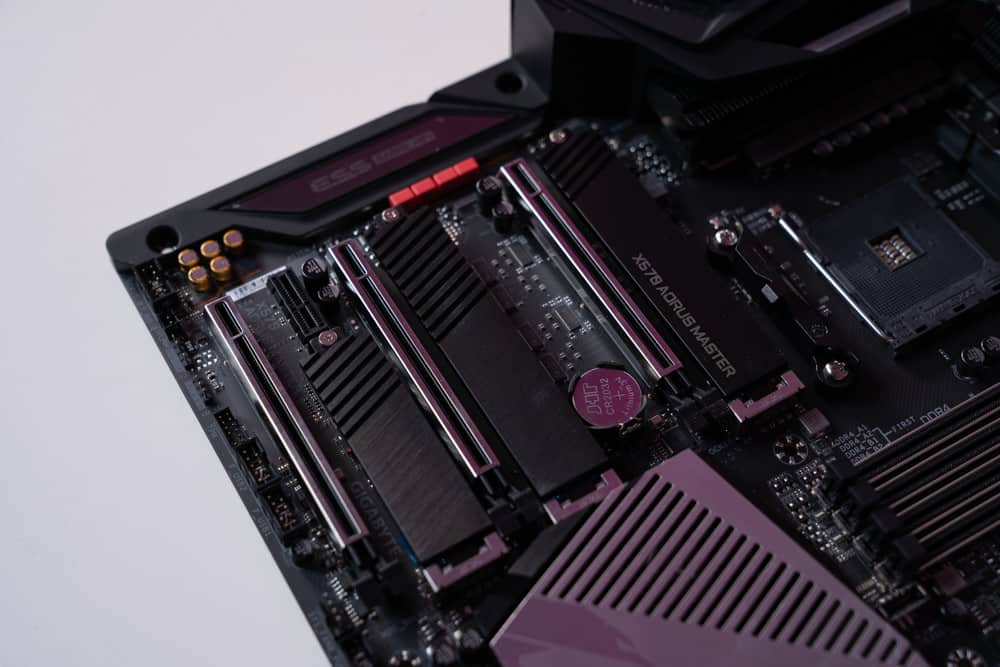
WePC is reader-supported. When you buy through links on our site, we may earn an affiliate commission. Prices subject to change. Learn more
Taking a look back at what AMD had to offer, we compare what B550 vs X570 motherboards have to offer. With a look at the two chipsets, we can see the differences in what’s on offer and why you might find one to be the better choice for you.
In the following article, we’ll be looking at the differences from a fact-based perspective, comparing number-by-number specifications to see what the B550 has to offer over the X570. We’ll also be answering some of the major questions surrounding the B550 motherboard and exploring how choosing one for your next build might impact you from a gaming standpoint.

5-way optimization
High performance networking
Solid overclocking potential
Can get quite hot
Shop on Amazon
CHECK PRICE
Good power delivery
Intel 2.5GbE and WiFi 6 networking
USB 3.2 Gen 2 Type-C header
Displayport and HDMI for APU users
No clear CMOS or BIOS buttons on the back
Shop on Amazon
CHECK PRICEBefore exploring the differences between chipsets and what they do, it is important to understand how a motherboard works. A motherboard is a printed PCB that contains copper and gold tracers we call ‘lanes’ that interconnect all the components attached to it.
The most important role a motherboard plays is facilitating communication between all your PC components, second to that is power delivery. Power delivery is handled by two connectors on the motherboard, one 24-pin connector and the other a six or four-pin CPU-only connector (depending on the motherboard).
The chipset is arguably the most important component attached to a motherboard. The chipset controls communication between the components attached to your motherboard, it also controls the USB and I/O interfaces at the rear of the motherboard. Without the chipset, nothing on your motherboard would work and they certainly wouldn’t communicate in any tangible fashion.
Generally the higher the number, the better the chipset. X570 is currently the best chipset on offer from AMD on the AM4 platform. But with X670 and AM5 it isn’t straight up the best choice anymore.
Let’s then, discuss exactly what a B550 motherboard is. Well, in its simplest form, it’s a motherboard that utilizes the latest AMD B550 chipset – the theoretical glue that connects the microprocessor to the rest of the motherboard. All motherboards can be categorized by a unique chipset, each bringing its own specific set of pros and cons to the table. Whilst we’ll discuss the benefits of a B550 in more detail shortly, one example of this is how B550 motherboards are compatible with Zen 3 (AMD 5000 series) CPUs with a quick BIOS update at launch. Those with a B450 had to wait until January 2021 to get hold of their updates and take advantage of these new CPUs.
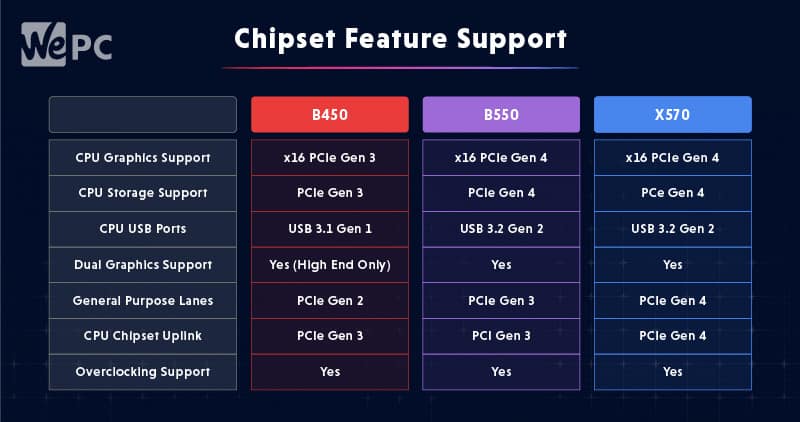
So, straight off the bat, the first thing you probably noticed is how many similarities these two chipsets actually have. As you can see, both have X16 PCIe Gen 4 CPU graphics support, PCIe Gen 4 CPU Storage support, and USB 3.2 Gen2 support. They also share their dual GPU capabilities as well – albeit hugely underused in today’s market.
That, however, is where most of the similarities end. Differences start to appear when we take a look into general-purpose lanes, with the B550 only laying claim to PCIe Gen 3. In comparison, the X570 offers up PCIe Gen 4 general purpose lanes, alongside PCIe Gen 4 CPU chipset uplink as well – another feature the B550 doesn’t offer. That’s pretty much it though as far as numerical specifications go, there really isn’t a great deal separating these two chipsets.
VRM stands for voltage regulation module, the chips on the motherboard responsible for power stability. Generally, it’s better to have more of these VRMs as a greater amount means more control over the power delivery and more stability when delivering a high amount of power to hungry CPUs.
The X570 chipset motherboard has more of these VRMs, making it a better option when opting for clean, stable and efficient power delivery.
Whilst the B550 and X570 might be fairly similar in terms of technical specs, one area where they don’t see eye-to-eye is compatibility. AMD has designed the B550 chipset as a board for the future, bringing with it excellent compatibility and support for Ryzen 3000 (and beyond) CPUs. That being said, unlike the X570, the B550 is not compatible with older Gen 1 + 2 Ryzen CPUs.
So, for anyone with a Ryzen 2000 series (or older), the B550 is certainly not what you’re looking for. To make matters even more confusing, B550s also don’t support Ryzen’s current batch of APUs either. Now, whilst these APUs are technically part of the Ryzen 3000 series, they don’t run on Zen 2 architecture. The 3200G and 3400G run on Zen+ architecture which, unfortunately, is not supported by B550s.
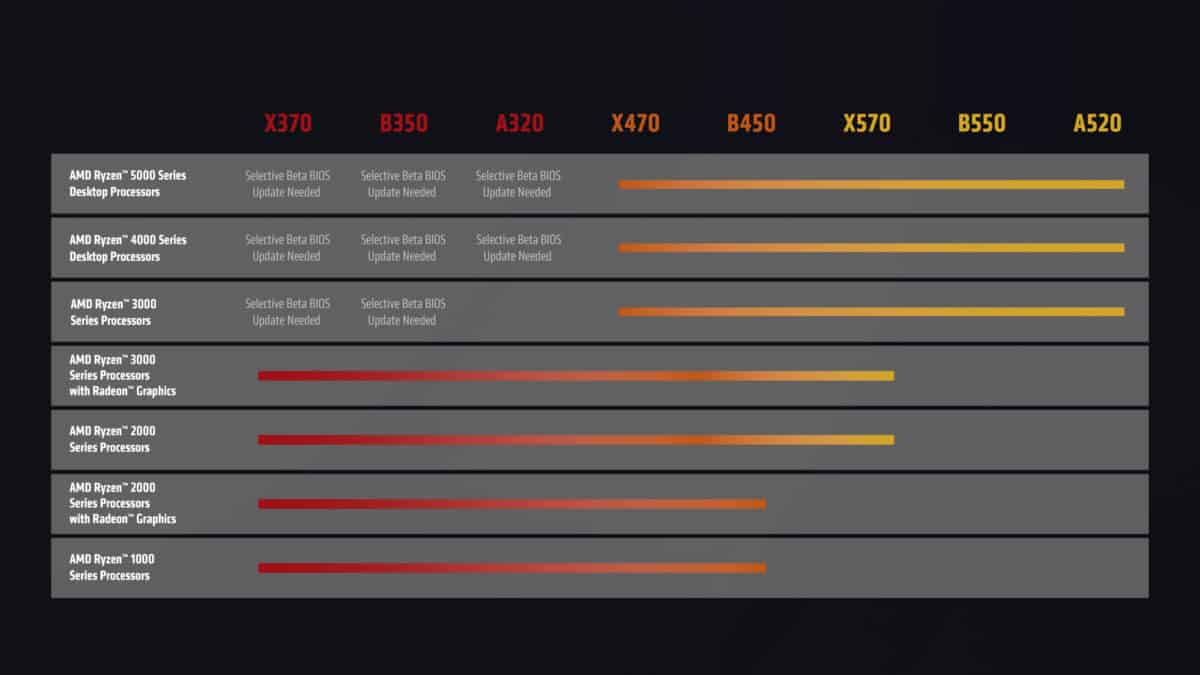
Technically, both motherboard chipsets do support dual GPU functionality. However, the dual GPU feature is only available on high-end B550 motherboards, whereas the same feature can be seen on all ATX X570 motherboards.
This provides a particular advantage to the X570 motherboards as functionality is the name of the game for a lot of users. You can add a PCIe expansion card or another GPU into that slot if you’re feeling frivolous.
Price was one of the big reasons why the B550 chipset was brought to life. Consumers were seemingly unhappy that they couldn’t get access to PCIe Gen 4 without splashing out the cash on a fancy X570 motherboard. So, in true AMD fashion, they decided to bring this cheaper alternative to life which not only supports at the time next-gen AMD CPUs but also offers PCIe Gen 4 support. That being said, and contrary to AMD’s claims of cheaper pricing, the B550 has hit shelves at a confusing price point – almost identical to that of the X570 counterpart. Even now there might be plenty of overlap as newer motherboards come out in their place.
The main differences between X570 and B550 motherboards are:
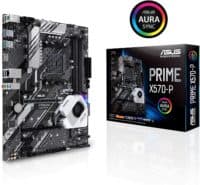
Good budget performance
Reinforced PCIe slots
Rom for two Gen 4.0 M.2 slots
Pretty basic design
Lacking in premium features
Shop on Amazon
CHECK PRICESo, there you have it, our complete breakdown of the fundamental differences that separate B550 vs X570 chipsets. These offer a time of great value even today with what AM4 CPUs are like so it is always a good idea to stay informed as even looking at the 5800X3D gives you a good reason to consider one of these motherboards.